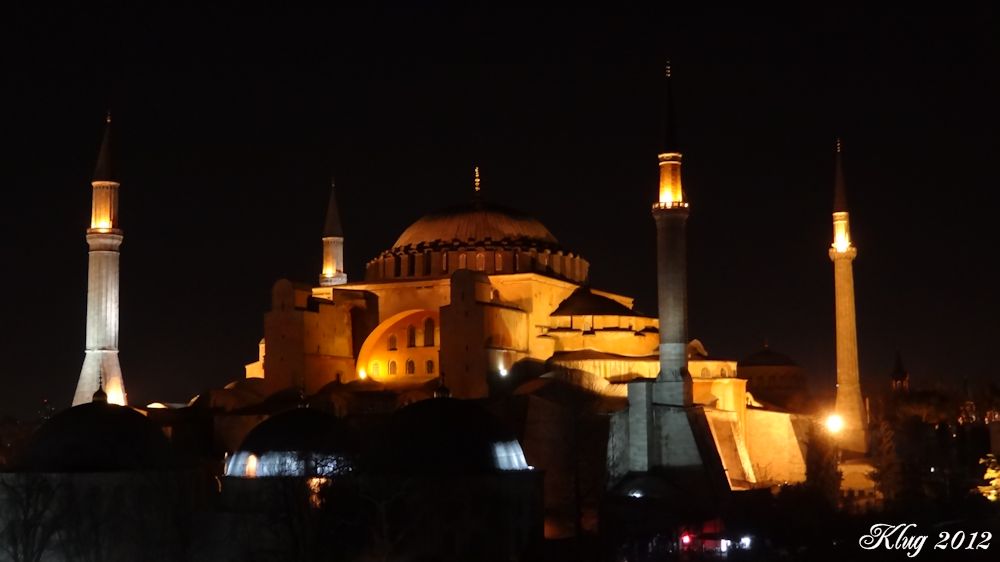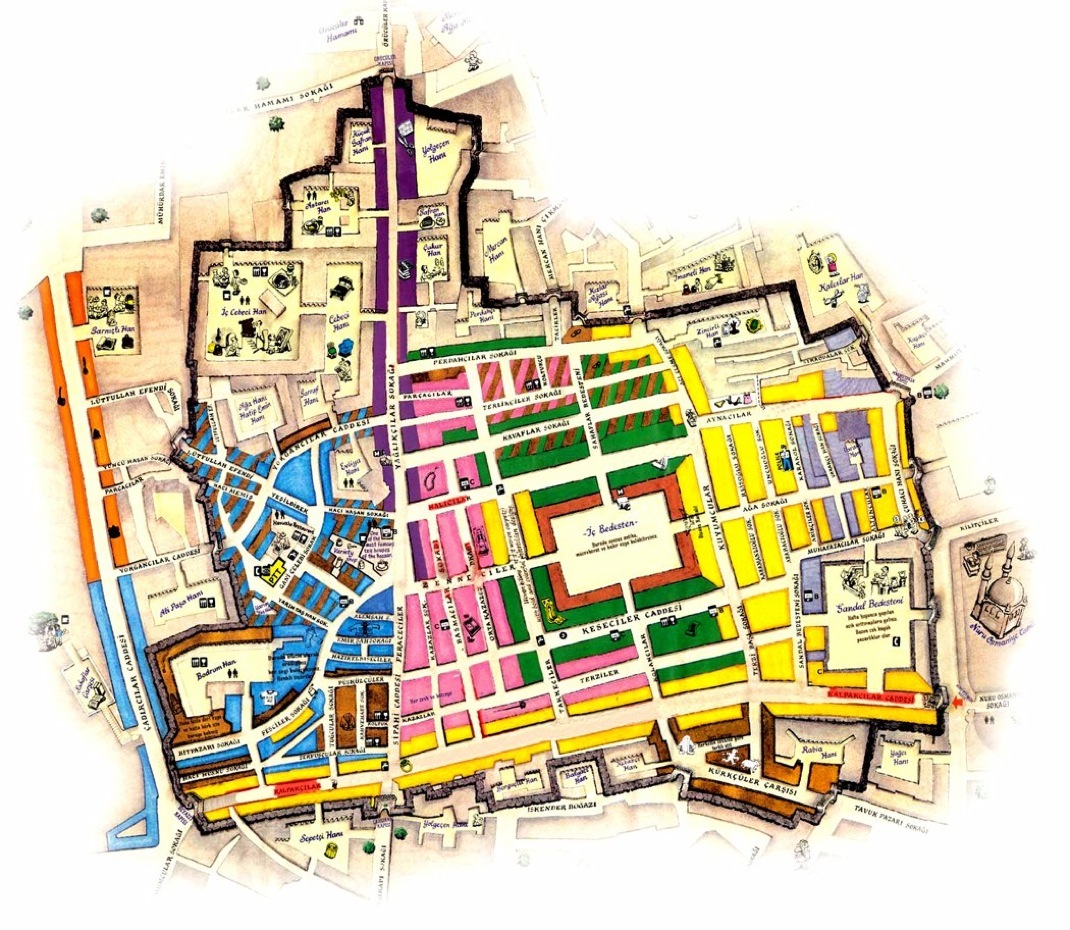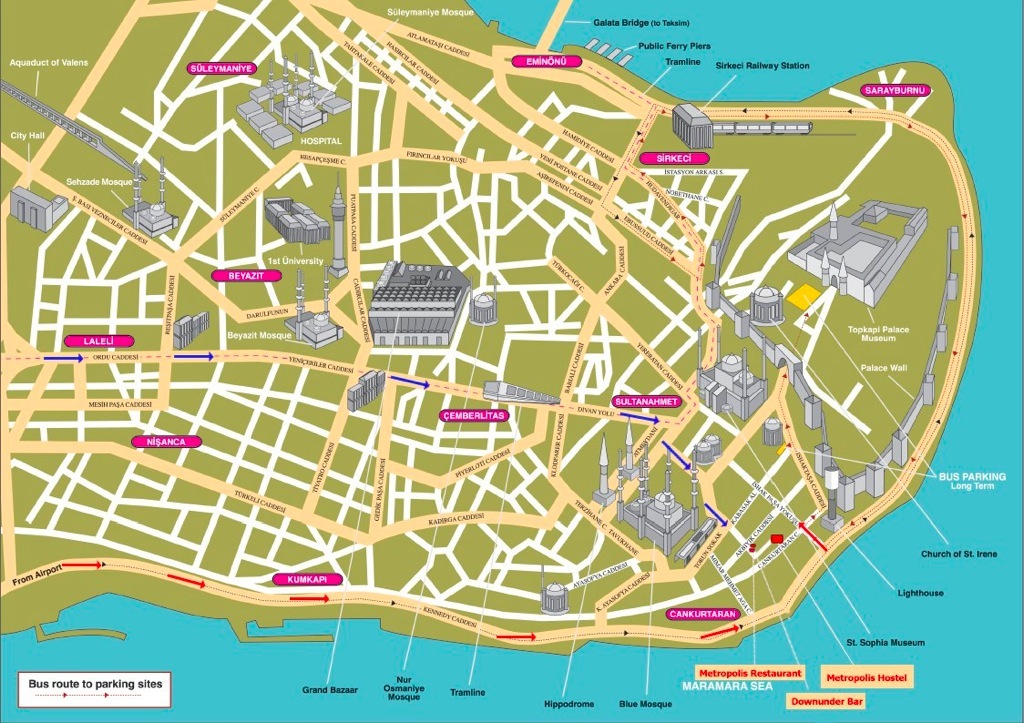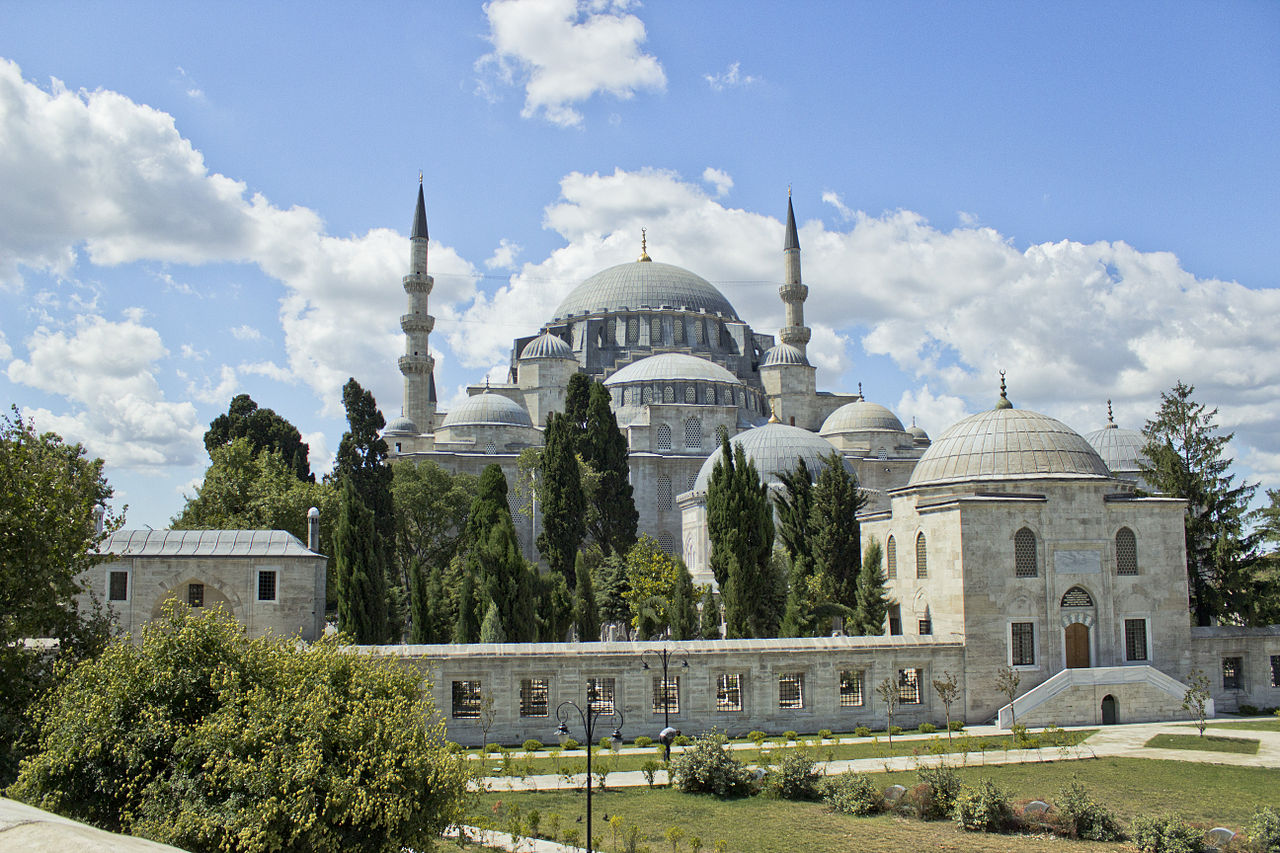

Hagia Sofia at night (photo by C Klug, March 2012)
Links to Port Pages
Istanbul, Turkey
Three years ago we visited Istanbul for several days at the end of our cruise. What a wonderful place, full of culture and history.
We will only have a day in port, departing at 6 pm, as this is the transition port between the two cruises. David and Lynn will be joining us here after spending a few days in Istanbul. We had the opportunity to see most of the Sultanahmet area in 2012, but we did not get to the Grand Bazaar. We hope to get off the ship for a few hours and go over to the bazaar and perhaps stop by the AyaSofya Hamam in the square where we had our Turkish baths. There was a bath bowl we should have purchased when we were there and neither of us did it. So a chance to get one while in Istanbul! Or maybe go see the Suleymaniye Mosque?
![]()
 |
 |
Grand Bazaar Map - Istanbul |
Istanbul Map |
 |
|
Süleymaniye Mosque - (photo from Wikipedia) |
|
Top photos above from Grand Bazaar website (link below)
![]()
What we plan to do:
The Grand Bazaar (Kapalıçarşı) in Istanbul is one of the largest covered markets in the world with 60 streets and 5,000 shops, and attracts between 250,000 and 400,000 visitors daily. It is well known for its jewellery, hand-painted ceramics, carpets, embroideries, spices and antique shops. Many of the stalls in the bazaar are grouped by type of goods, with special areas for leather, gold jewellery and the like. The bazaar has been an important trading centre since 1461 and its labyrinthine vaults feature two bedestens (domed buildings), the first of which was constructed between 1455 and 1461 by the order of Sultan Mehmed the Conqueror. The bazaar was vastly enlarged in the 16th century, during the reign of Sultan Suleiman the Magnificent, and in 1894 underwent a major restoration following an earthquake. (From the Grand Bazaar website)
Süleymaniye Mosque
"The Süleymaniye Mosque, built on the order of Sultan Süleyman (Süleyman the Magnificent), "was fortunate to be able to draw on the talents of the architectural genius of Mimar Sinan" (481 Traditions and Encounters: Brief Global History). The construction work began in 1550 and the mosque was finished in 1558.
This "vast religious complex called the Süleymaniye...blended Islamic and Byzantine architectural elements. It combines tall, slender minarets with large domed buildings supported by half domes in the style of the Byzantine church Hagia Sophia (which the Ottomans converted into the mosque of Aya Sofya)" (481 Traditions and Encounters: Brief Global History).
The design of the Süleymaniye also plays on Suleyman's self-conscious representation of himself as a 'second Solomon.' It references the Dome of the Rock, which was built on the site of the Temple of Solomon, as well as Justinian's boast upon the completion of the Hagia Sophia: "Solomon, I have surpassed thee!" The Süleymaniye, similar in magnificence to the preceding structures, asserts Suleyman's historical importance. The structure is nevertheless smaller in size than its older archetype, the Hagia Sophia." (From Wikipedia)
![]()







